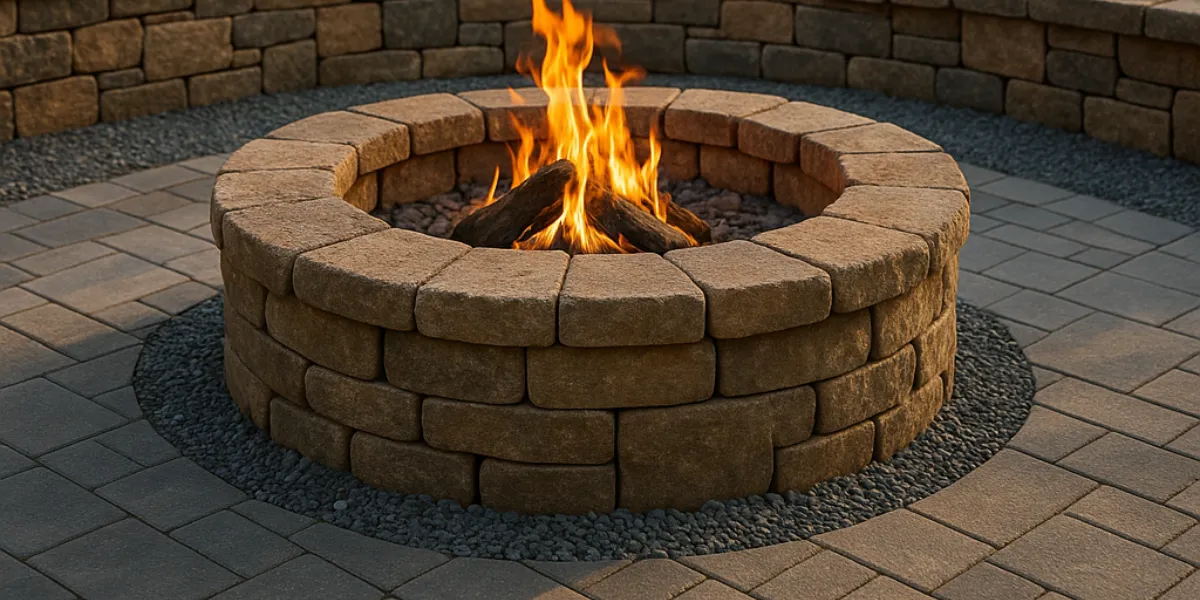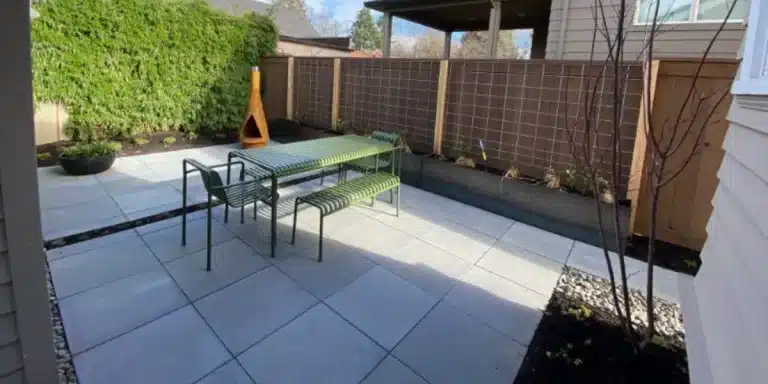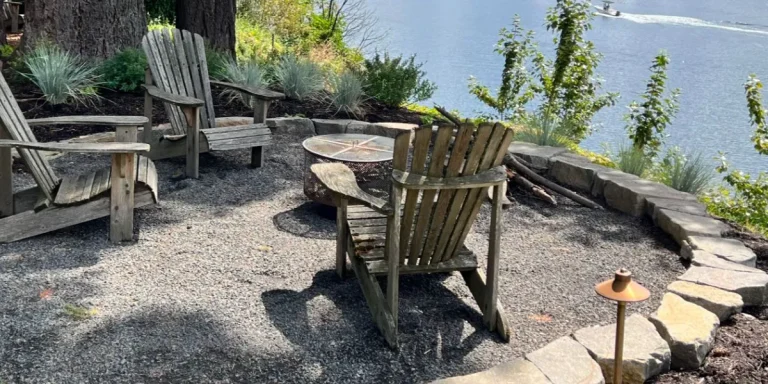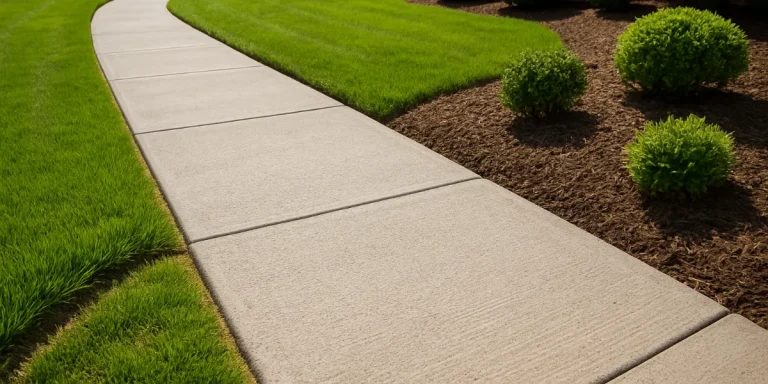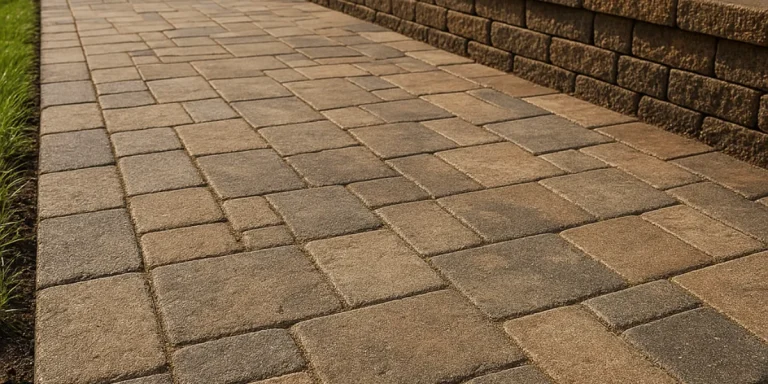How to Design a Fire Pit That Won’t Smoke You Out
A backyard fire pit should be a cozy, relaxing space—not a smoky mess. But if your fire pit leaves guests dodging clouds of smoke, something went wrong in the design. The good news? With the right planning and materials, you can build a fire pit that burns clean and keeps the air around it comfortable.
Whether you're upgrading an existing fire feature or starting from scratch, here’s what you need to know.
Why fire pits get smoky
If your fire pit frequently sends smoke drifting toward you or your guests, it’s likely due to incomplete combustion—the fire isn’t burning as cleanly or efficiently as it should. This typically happens when conditions aren't right for a strong, steady burn. Here are some of the most common reasons fire pits become smoke machines instead of relaxing outdoor features:
-
- Restricted airflow
Fire needs oxygen to burn efficiently. When a fire pit lacks ventilation or has a design that restricts airflow—such as being too deep or built without vents—smoke builds up because the flames are struggling to "breathe." Instead of a clean, hot fire, you get one that smolders and sends smoke in every direction. - Burning wet or unseasoned wood
Moisture is one of the biggest culprits behind smoky fires. Wood that hasn’t had time to fully dry—known as green or unseasoned wood—contains too much water for it to combust properly. Instead of burning cleanly, it sizzles, steams, and releases plumes of smoke that irritate eyes and lungs. - Flawed or generic fire pit design
Off-the-shelf or DIY fire pits often lack the key design features needed for optimal performance. Pits that are too deep, have high walls, or lack air intakes can trap heat and reduce airflow, causing smoke to linger rather than disperse. - Choosing the wrong type of wood
Not all wood is created equal. Softwoods like pine, fir, or spruce are loaded with sap and resin, which burn unevenly and release dense, acrid smoke. Even if the wood is dry, these resins can cause flare-ups, excessive smoke, and an unpleasant odor. - Poor maintenance or leftover ash
An often overlooked factor is buildup in the fire pit itself. Layers of ash or debris from previous fires can obstruct airflow and disrupt combustion. A clean pit allows for better oxygen flow and a more consistent flame.
- Restricted airflow
These smoke-related issues tend to be more common with store-bought fire bowls or hastily built pits that haven’t been engineered for the specific conditions of your yard. Without custom planning, even the most expensive materials can lead to frustrating results.
Design tips to reduce fire pit smoke
A well-designed fire pit doesn’t just look good—it functions better. One of the most common complaints we hear from homeowners is that their fire pit creates too much smoke, ruining what should be a relaxing outdoor experience. At White Oak Landscapes, we take both form and function seriously when designing fire features. Whether we’re crafting a natural stone fire pit or installing a sleek gas unit, reducing smoke is always a top priority. Here’s how we do it:
1. Choose a smokeless fire pit design
Smokeless fire pits are one of the most effective solutions available. These pits are specifically engineered to improve combustion through a process called secondary burn, where heated air is forced through vent holes near the top of the pit. As the smoke rises, it gets re-burned—drastically reducing what escapes into the air.
-
-
- Ideal for tight yards or patios where smoke control matters
- Can be built into custom hardscapes or purchased as standalone units
- Burn cleaner, hotter, and more efficiently than traditional pits
-
We’ve installed smokeless fire pits for many clients in Oregon City, West Linn, and Clackamas who wanted a more comfortable, low-maintenance fire experience.
2. Build for optimal airflow
Traditional fire pits can burn cleanly—if they’re built right. The key is maintaining steady oxygen flow to the flame, from both the base and the sides.
Design principles we apply include:
-
-
- Leaving strategic gaps between bricks or stones to allow for air intake
- Installing vented steel liners or rings that channel airflow efficiently
- Avoiding overly deep walls, which trap heat and smoke, choking off circulation
-
When airflow is obstructed, fires struggle to maintain a consistent burn—resulting in more smoke and less heat. Proper airflow design helps the fire breathe and keeps your seating area more pleasant.
3. Use the right wood—or go with gas
Fuel choice plays a major role in smoke output. Wet, resinous, or improperly seasoned wood burns poorly and releases excess smoke. To keep your fire pit burning clean:
-
-
- Stick with dry, seasoned hardwoods like oak, maple, ash, or birch
- Avoid softwoods (pine, fir, cedar) that produce more sap, smoke, and creosote
- Never burn wet, green, or pressure-treated wood, which smokes excessively and may contain toxins
-
Want to eliminate smoke altogether? Gas fire pits are an excellent solution for homeowners who want the ambiance of fire without the hassle. They’re cleaner, easier to control, and require virtually no maintenance beyond routine inspections.
4. Think about wind and location
Even the best fire pit can smoke you out if it’s in the wrong spot. Wind plays a huge role in how smoke behaves, so we carefully evaluate your property before installation.
Placement tips we follow:
-
-
- Avoid low areas where smoke can settle
- Keep the fire pit away from fences, sheds, or overhanging branches
- Use prevailing wind patterns to guide where seating should go
- Add natural wind buffers, like shrubs or retaining walls, to help disperse smoke
-
Each site is different, so we take the time to plan your fire pit layout based on your landscape’s unique exposure and airflow.
5. Maintain a clean burn
Even the most well-built fire pit needs regular maintenance to keep it performing at its best. Ash buildup, leftover debris, and clogged vents all reduce airflow and promote incomplete combustion.
To keep your fire pit clean and efficient:
-
-
- Scoop out excess ash after every few uses
- Remove partially burned wood or leaves
- Check that vents and liners aren’t blocked or damaged
-
A little routine upkeep goes a long way in preventing smoke and keeping your outdoor space inviting.
Example: A smokeless upgrade in West Linn
One of our recent clients in West Linn had a beautiful but frustrating wood-burning fire pit that constantly smoked out their patio. After inspecting the site, we:
-
- Rebuilt the fire pit with integrated venting and an elevated fire grate
- Replaced the surrounding gravel with a heat-resistant paver patio
- Installed a stacked stone wind barrier to reduce smoke drift
The result? A cleaner, more enjoyable outdoor space they now use year-round.
Proudly serving Oregon City and surrounding areas
White Oak Landscapes provides expert fire pit design and outdoor living solutions throughout:
-
- Oregon City
- West Linn
- Lake Oswego
- Happy Valley
- Clackamas
- Milwaukie
- Tualatin
- Wilsonville
- Canby
- Gladstone
- Beavercreek
- Estacada
- Damascus
Ready to upgrade your fire pit?
Design a fire feature you’ll love to gather around
If your current fire pit is more hassle than it’s worth—or you want a brand-new outdoor gathering space—we can help. Contact White Oak Landscapes today to request a consultation and get expert guidance on a custom solution that fits your space and lifestyle.
We serve homeowners throughout Oregon City and the surrounding area, offering custom fire pit design, paver patios, landscape grading, and more.

